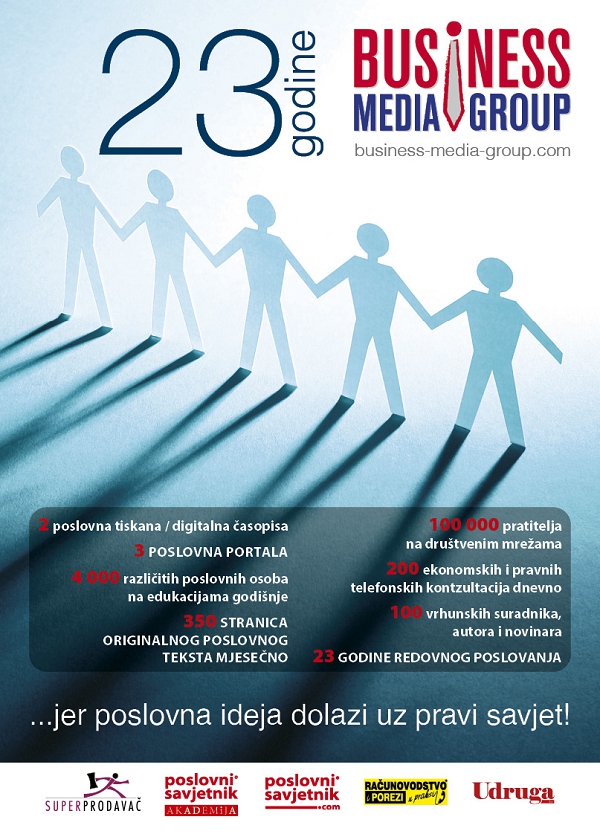Why companies have to start with innovation NOW!
In this column I write about the ‘sense of urgency’ for innovation that is missing in most organizations. If you have no active policy and culture for innovation in your organization then one thing is very certain: your company will not survive much longer. So…. Start NOW!
I give four lessons of innovation based on benchmarks, followed by three challenges every company has to find an answer for and, yes, you need to find it NOW ! Although solutions are implicit given, I will also provide three possible solutions that hopefully will inspire you to take action NOW ! Finally, you can read four views from practice, meant to help you in your thinking about innovation based on current developments.
1 - The four lessons of innovation
Today is a time of disruption and a fast changing world and it is important for every company to innovate and improve. Therefor benchmarking is necessary to see what lessons other organizations learned regarding strategy, process, structure and skills.
a - Strategy lessons
Not every idea for innovation needs to be a blockbuster. Enough numbers of small or incremental innovations can also bring big profits. Do not only focus on new products, transforming ideas can come from all departments like marketing, production, finance etc. Successful innovators use the ‘innovation pyramid’, a few big ideas on top that receive the highest investments, at the bottom a broad layer of incremental innovations in the start phase, in between a portfolio of promising ideas in the test phase. The ideas are going up and down in the pyramid to check and influence each other.
b - Process lessons
Tight reins kill innovation. Planning, budgeting and reviews as used for the daily business are fatal for innovation. You simply have to expect deviations from the innovation plan. If employees are rewarded to do what management expects them to do, instead of acting flexible and responding to external developments, you kill innovation.
c - Structure lessons
While formal controls are released, organizations need to tighten the interpersonal connections between innovation projects and the departments in the company. Innovations that change the ‘rules of the game’ often go through existing communication channels and relations, or combine elements of existing capacities in new ways. If a company creates two ‘classes’ and give the innovators more privileges and prestige, the people in the existing business will do everything to kill the innovation.
d - Skills lessons
Even the most technical innovations require strong leaders with excellent relational- and communication skills. Members of innovation teams stay together during the development of an idea, even if the career planning policy of the organization would require a faster job rotation.
Because innovations need ‘connectors’ (people who know how they can find partners in the mainstream business or external) innovations will be most successful in cultures that stimulate cooperation.

Large Organizations
Large organizations do not have an automatic right anymore to exist as it used to be. Look at Nokia, Lego, Kodak etc. What do you have to watch to remain futureproof? There is not one scenario for an organization, there are always more scenario’s for the future. What an organization absolutely needs to have is a business plan for innovation and flexibility and alertness. Forgetting to innovate and maintaining the status quo means the certain end of the organization.
2 - Three Challenges
There are three challenges for today’s organizations: a shorter lifetime, new technologies and new business models:
a - Shorter lifetime
Richard Foster (professor Yale University) calculated that the average lifetime of an organization today is 15 years. In the last century that was 50 years. Chances are that companies we do not know yet will be in the top 25 of organizations in 10 years.
b - Unexpected business models
Organizations with new business models disrupt the markets. The largest hotel chain in the world has no hotels (Airbnb). The largest taxi company has no taxi’s (Uber) and the largest ‘disc-company’ in the world does not deal in ‘discs’ (iTunes).
c - New technologies
By now everybody can mention a few new technologies like social media, 3D-printing, autonomous systems and robots, but there are so many more. From virtual paying to big data, from monitoring health to artificial intelligence, augmented and virtual reality, biotechnology and genomics, open source and open data, crowdfunding, gamification, Internet of Things and so on and so on.
It is a very long list and the list is still growing longer.
3 - Three Solutions:
a – Realize that you have to change
Katleen De Stobbeleir (professor Vlerick Business School) says that many leaders realize they should do things different. They do not gain a competitive advantage anymore from the way they used to do things. They work more and harder but do not make progress. They look for tools to do things different but the ‘how’ is still not clear.
CEO’s are usually a few years in the top and then leave for another challenge. Why would they do all the efforts to turn around a company in the 3-4 years they are there? The success will last another 3 years they think. Other top managers stay too long and expect they can wait till they are retired.
The ‘sense of urgency’ is still missing in many organizations. Leaders need to be people who dare, who have the guts, who are not afraid to change the business, the organization.
Think a minute about this:
- If your company will disappear tomorrow, will it be missed? How fast is the hole filled in by an alternative? Of course, an alternative will always come up.
- If Google is gone tomorrow you will use another search engine. The only question is how long will it take for this new search engine to function at the level of Google.
- How do you make your organization unique in a certain way?
b – Dare to be innovative
Big organizations are usually not aware that they have the tendency to maintain the status quo. Innovative ideas coming from the ‘bottom’ do not come far up in the company. Such a conservative culture has to change into an innovative mindset.
Why should we not try that crazy idea from a ‘shop floor worker’?
The CEO has to be open-minded, make himself vulnerable and realize that he does not have all the answers. We have to get rid of that ‘heroic authoritarian leader’ who decides everything and behind whom all followers hide, says De Stobbeleir.
There is also another obstacle: Mission Statements are often not ambitious!
For instance:
- Netflix states: ‘we are going to make all movies in the world available for everyone’.
- Elon Musk says: We are going to conquer Mars, because the world is going to ruin that planet anyway.’
- You do not read that kind of ambition in mission statements of most companies. Usually they ‘want to become the best, in a market of something, that already exists 50 years’.
Would you challenge yourself to re-write your mission statement?
c – Give start-ups enough space in the organization
The trend that Innovation comes from Research & Development (R&D) is over. R&D is important and necessary but no longer sufficient. You have to invest in people who are alert for evolutions and innovations on the edge of the business.
Possible questions: Which start-ups are working on activities that could also be relevant for us?
Do we take them into our organization? Will we make a partnership or an alliance?
Realize that start-ups can have difficult times in an organization. A start-up with a turnover of 10 million after two years is not taken seriously by a Business Unit that makes a trillion turnover.
Those managers are occupied with added value, profit margins, processes, efficiency, with control!
The entrepreneur of the start-up is trying things and does fast prototyping. He works with products that do not exist yet in a new market. The biggest loss of time for such an entrepreneur is to make a business plan. Probably it is better to put such a new business or venture outside the organization in a start-up incubator.
Example General Electric (GE)
Organizations have to deal with their past, present and future. They concentrate on their past and work on their future.
But, they have to let go of their past and that is too difficult for most organizations. Historic successes are piled up and so the past leads to rigidity.
We need to find a way to use our achievements without letting those becoming obstacles.General Electric is one of the largest machine producers in the world (airplane motors, turbines etc.) and all these machines generate huge amounts of data. These data are only available for GE and not for start-ups. GE therefor is in the unique position to use these data for Internet of Things applications. As a hardware company however they are not capable to make a mind shift toward software development. Therefor GE CEO Immelt founded a complete new software company with external recruited developers.
Where in the past of your organization do you have opportunities and chances?
What are the obstacles to overcome?
Jan Rabaey, inventor of the iPad and co-deviser of the Internet of Things, puts the current possibilities into perspective but also looks further, leading to a surprising insight (Knack Magazine, March 2017): ‘‘I do not see artificial intelligence exist at its own, it is always supplementary on what we do. We improve ourselves through technology and artificial intelligence, I do not belief in the idea that technology becomes independent and, at this moment, it is not developing into that direction.
I see much more opportunities than dangers.
But….if it would happen that technology becomes independent….then it might be a next step in our evolution. Then we are creating a new kind of humans…so what?’’
Well…what do you think?
Is this an interesting perspective?
‘Online’ is taking an increasing part of our lives, the Italian philosopher Luciano Floridi made up the term ‘onlife’ for it.
In his book ‘the end of online shopping’ Wijnand Jongen described the consequences for the retail sector. Not only will it reduce the offline-shopping, but also online-shopping as we know it has had its longest time: ‘as soon as customers are able to continue their online shopping experiences from home or on the road in the ‘online instore’ it will be the end of the online shopping’.
Apps, Coolblue- and Amazon shops, sector blurring, channel integration etc. are examples of phenomena’s that at the same time are trigger and consequence in the creation of complete new value chains.
Is your organization thinking about these developments?
Is your company prepared for this new competition?
Competitive advantages do not come anymore from internal efficiencies, they come from external connections.
"Business theorists have long thought of strategy as a game of chess. By making the right moves, managers could diminish the threat of new market entrants and substitutes and improve bargaining power with buyers and suppliers. That, it has long been thought, was what led to sustainable competitive advantage. Yet strategy in a networked world is different. Competitive advantage is no longer the sum of all efficiencies, but the sum of all connections. Strategy, therefore, must be focused on deepening and widening networks of talent, technology and information and we do that by accessing ecosystems through platforms." (Greg Satell on the Forbes site).
Linear operating mega companies are losing more and more market share and profit to platforms that live from a as big as possible network that generates value.
In which platforms does your company play a value creating role?
John Lodder MA., MSc.
www.balance-consultancy.com















